The Alleged Lexical Extravagance Of The Eskimos Comports So Well With The Many Other Facets Of Their
The alleged lexical extravagance of the Eskimos comports so well with the many other facets of their polysynthetic perversity: rubbing noses; lending their wives to strangers; eating raw seal blubber; throwing grandma out to be eaten by polar bears; “ We are prepared to believe almost anything about such an unfamiliar and peculiar group,” says Martin, in a gentle reminder of our buried racist tendencies. The tale she tells is an embarrassing saga of scholarly sloppiness and popular eagerness to embrace exotic facts about other people’s languages without seeing the evidence. The fact is that the myth of the multiple words for snow is based on almost nothing at all. It is a kind of accidentally developed hoax perpetrated by the anthropological linguistics community on itself. The original source is Franz Boas’ introduction to The Handbook of North American Indians (1911). And all Boas says there, in the context of a low-key and slightly ill-explained discussion of independent versus derived terms for things in different languages, is that just as English uses separate roots for a variety of forms of water (liquid, lake, river, brook, rain, dew, wave, foam) that might be formed by derivational morphology from a single root meaning ‘water’ in some other language, so Eskimo uses the apparently distinct roots aput 'snow on the ground’, qana 'falling snow’, piqsirpoq 'drifting snow’, and qimuqsuq 'a snow drift’. Boas’ point is simply that English expresses these notions by phrases involving the root snow, but things could have been otherwise, just as the words for lake, river, etc. could have been formed derivationally or periphrastically on the root water. But with the next twist in the story, the unleashing of the xenomorphic fable of Eskimo lexicography seems to have become inevitable. What happened was that Benjamin Lee Whorf, Connecticut fire prevention inspector and weekend language-fancier, picked up Boas’ example and used it, vaguely, in his 1940 amateur linguistics article 'Science and linguistics,’ which was published in MIT’s promotional magazine Technology Review (Whorf was an alumnus; he had done his B.S. in chemical engineering at MIT). Our word snow would seem too inclusive to an Eskimo, our man from the Hartford Fire Insurance Company confidently asserts. With an uncanny perception into the hearts and minds of the hardy Arctic denizens (the more uncanny since Eskimos were not a prominent feature of Hartford’s social scene at the time), he avers: “We have the same word for falling snow, snow on the ground, snow packed hard like ice, slushy snow, wind-driven flying snow – whatever the situation may be. To an Eskimo, this all-inclusive word would be almost unthinkable; he would say that falling snow, slushy snow, and so on, are sensuously and operationally different.” […] Notice that Whorf’s statement has illicitly inflated Boas’ four terms to at least seven (1: “falling”, 2: “on the ground”, 3: “packed hard”, 4: “slushy”, 5: “flying”, 6, 7 …. : “and other kinds of snow”). Notice also that his claims about English speakers are false; I recall the stuff in question being called “snow” when fluffy and white, “slush” when partly melted, “sleet” when falling in a half-melted state, and a “blizzard” when pelting down hard enough to make driving dangerous. Whorf’s remark about his own speech community is no more reliable than his glib generalizations about what things are “sensuously and operationally different” to the generic Eskimo. But the lack of little things like verisimilitude and substantiation are not enough to stop a myth. Martin tracks the great Eskimo vocabulary hoax through successively more careless repetitions and embroiderings in a number of popular books on language. […] But never mind: three, four, seven, who cares? It’s a bunch, right? Once more popular sources start to get hold of the example, all constraints are removed: arbitrary numbers are just made up as the writer thinks appropriate for the readership. […] Among the many depressing things about this credulous transmission and elaboration of a false claim is that even if there were a large number of roots for different snow types in some Arctic language, this would not, objectively, be intellectually interesting; it would be a most mundane and unremarkable fact. Horsebreeders have various names for breeds, sizes, and ages of horses; botanists have names for leaf shapes; interior decorators have names for shades of mauve; printers have many different names for different fonts (Caslon, Garamond, Helvetica, Times Roman, and so on), naturally enough. If these obvious truths of specialization are supposed to be interesting facts about language, thought, and culture, then I’m sorry, but include me out. Would anyone think of writing about printers the same kind of slop we find written about Eskimos in bad linguistics textbooks? Take a random textbook like Paul Gaeng’s Introduction to the Principles of Language (1971), with its earnest assertion: “It is quite obvious that in the culture of the Eskimos… snow is of great enough importance to split up the conceptual sphere that corresponds to one word and one thought in English into several distinct classes…” (p. 137). Imagine reading: “It is quite obvious that in the culture of printers.., fonts are of great enough importance to split up the conceptual sphere that corresponds to one word and one thought among non-printers into several distinct classes…” Utterly boring, if even true. Only the link to those legendary, promiscuous, blubber-gnawing hunters of the icepacks could permit something this trite to be presented to us for contemplation.
Geoff Pullum, in The Great Eskimo Vocabulary Hoax. (via allthingslinguistic)
More Posts from Philosophical-amoeba and Others
12 Amazing Facts About Elephants
In honor of World Elephant Day, we present you with 12 little known facts about one of our favorite creatures…in GIFs, of course.
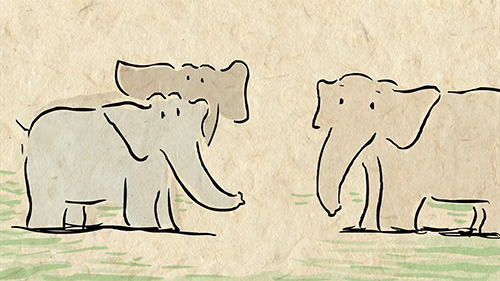
1. Elephants know every member of their herd and are able to recognize up to 30 companions by sight or smell.
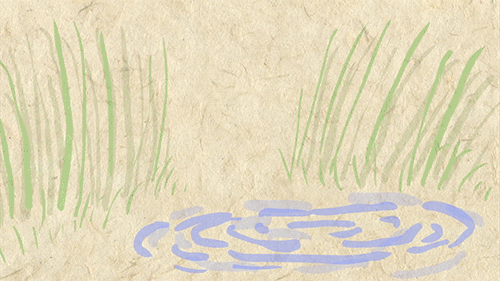
2. They can remember and distinguish particular cues that signal danger and can recall locations long after their last visit.
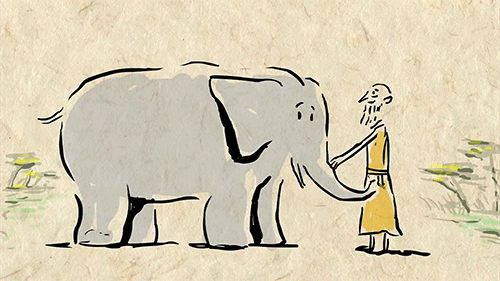
3. An elephant’s memory is not limited to its herd, nor is it limited to its species. In one instance, two circus elephants that performed together rejoiced when crossing paths 23 years later. Elephants have also recognized humans that they once bonded with after decades apart. 4.
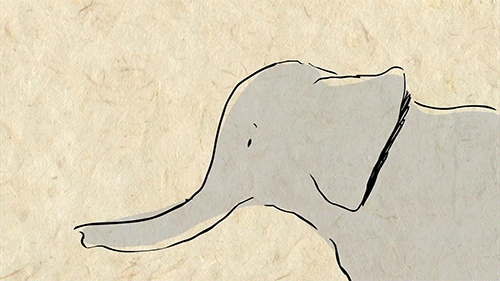
4. The elephant boasts the largest brain of any land mammal as well as an impressive encephalization quotient (the size of the animal’s brain relative to its body size). The elephant’s EQ is nearly as high as a chimpanzee’s.
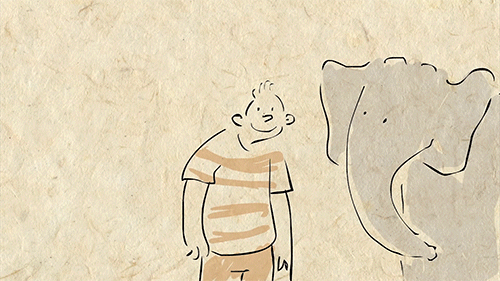
5. The elephant brain is remarkably similar to the human brain, with as many neurons and synapses, as well as a highly developed hippocampus and cerebral cortex.
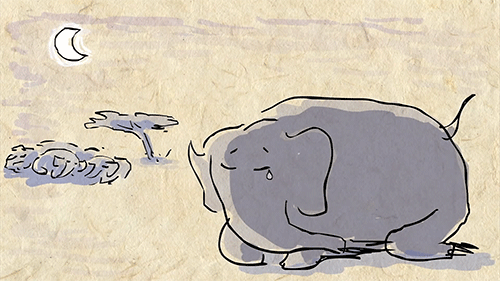
6. Elephants are one of the few non-human animals to suffer from post-traumatic stress disorder.

7. Elephants are creative problem solvers.
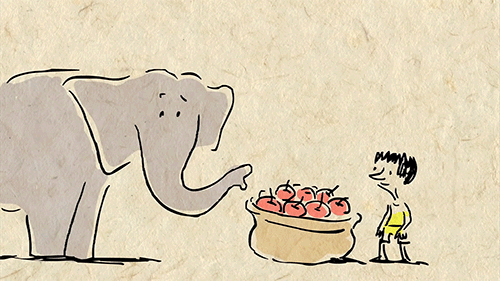
8. Don’t try to outsmart an elephant! They have an understanding of basic arithmetic and can even keep track of relative quantities.
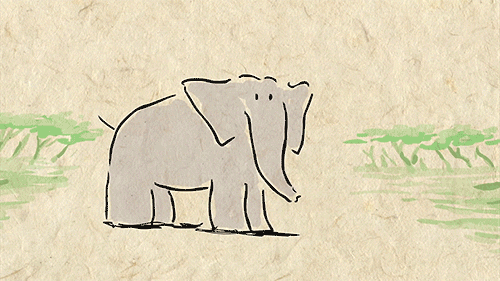
9. Elephants communicate using everything from body signals to infrared rumbles that can be heard from kilometers away. Their understanding of syntax suggests that they have their own language and grammar.
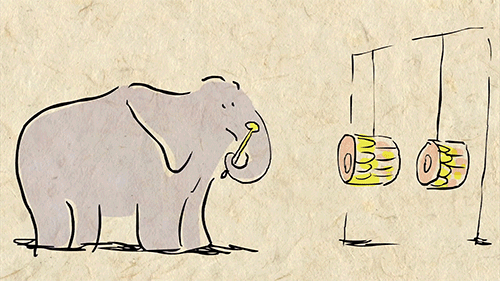
10. Elephants can recognize 12 distinct tones of music and recreate melodies.

11. Elephants are the only non-human animals to mourn their dead, performing burial rituals and returning to visit graves.
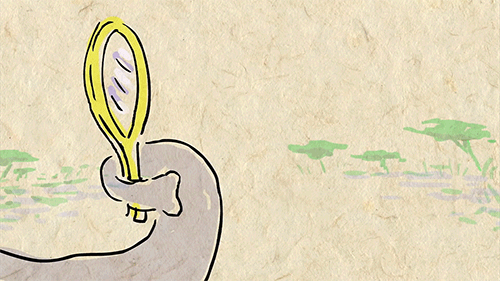
12. Elephants are one of the few species who can recognize themselves in the mirror.
Given what we now know about elephants, and what they continue to teach us about animal intelligence, it is more important than ever to make sure that these magnificent creatures do not vanish.
Check out some more fun elephant facts here and be sure to watch the TED-Ed Lesson Why elephants never forget - Alex Gendler
Animation by the ever-talented Avi Ofer

Awesome things you can do (or learn) through TensorFlow. From the site:
A Neural Network Playground
Um, What Is a Neural Network?
It’s a technique for building a computer program that learns from data. It is based very loosely on how we think the human brain works. First, a collection of software “neurons” are created and connected together, allowing them to send messages to each other. Next, the network is asked to solve a problem, which it attempts to do over and over, each time strengthening the connections that lead to success and diminishing those that lead to failure. For a more detailed introduction to neural networks, Michael Nielsen’s Neural Networks and Deep Learning is a good place to start. For more a more technical overview, try Deep Learning by Ian Goodfellow, Yoshua Bengio, and Aaron Courville.
GitHub
h-t FlowingData
Types of mooncakes
Right now(is festival for chinese singaporeans) is the mid-autumn festival. According to the ancient Chinese legend, the story of Chang Er, the wife of a merciless king who downed the elixir of immortality he had intended to drink, to save her people from his tyrannical rule.The tale goes that she ascended to the moon after that, and has been worshipped by the Chinese as a Moon Goddess ever since.

Making and sharing mooncakes is one of the hallmark traditions of this festival. In singapore, we have main five different chinese dialect group(hokkien,teochew,hakka,cantonese,hainanese) so of course, there are five different types of mooncakes.
CANTONESE MOOKCAKE
This is the most common style of mooncakes sold by bakeries and hotels. The round pastry, which is about 10cm in diameter and about 4cm thick, comes from south China’s Guangdong province and is also eaten in Hong Kong and Macau. The traditional mooncake is filled with lotus seed or red bean paste with egg yolks inside.

However, there are the modern snowskin mooncakes which contains anything from durian to champagne. (below are champagne mooncakes)

HOKKIEN MOONCAKE
They were known as Scholar Cakes in the past and given to those taking the Imperial Examination to fill junior and senior administrative positions in the Imperial Court. The filling usually comprises winter melon, tangerine peel and melon seeds. Sesame seeds are sprinkled on the white pastry to make it fragrant.

HAINANESE MOONCAKE
Hainanese ones are filled with dried fruit such as tangerine peel as well as sesame seeds and melon seeds. It has two verision with a salty and pepper version. The.The slightly flaky skin is made with pork lard and salt. According to a blog, they are actually only found in singapore as the story goes that the hainanese community in singapore was very poor and could not afford the normal mooncakes sold so they made their own type of mooncake.

TEOCHEW MOONCAKE
Yam-filled mooncakes with a flaky crust are the most common Teochew mooncakes sold in Singapore. Another type is la gao, which is a steamed black sesame cake. It comes plain or with green bean paste or yam filling. There is also another type of Teochew mooncake, a white disc that looks like a big biscuit and is filled with tangerine peel and sugar, flavoured with five-spice powder and topped with sesame seeds.



HAKKA MOONCAKE
This is actually uncommon and almost unheard of in singapore but moon cakes in Hakka regions of china, apart from common moon cakes, have “five-kernel moon cakes” and a kind of round cake made with glutinous rice flour and sugar, compressed into different size. (I can’t find an exact picture of the hakka mooncake so)
Neuro chip records brain cell activity at higher resolution
Brain functions are controlled by millions of brain cells. However, in order to understand how the brain controls functions, such as simple reflexes or learning and memory, we must be able to record the activity of large networks and groups of neurons. Conventional methods have allowed scientists to record the activity of neurons for minutes, but a new technology, developed by University of Calgary researchers, known as a bionic hybrid neuro chip, is able to record activity in animal brain cells for weeks at a much higher resolution. The technological advancement was published in the journal Scientific Reports.

“These chips are 15 times more sensitive than conventional neuro chips,” says Naweed Syed, PhD, scientific director of the University of Calgary, Cumming School of Medicine’s Alberta Children’s Hospital Research Institute, member of the Hotchkiss Brain Institute and senior author on the study. “This allows brain cell signals to be amplified more easily and to see real time recordings of brain cell activity at a resolution that has never been achieved before.”
The development of this technology will allow researchers to investigate and understand in greater depth, in animal models, the origins of neurological diseases and conditions such as epilepsy, as well as other cognitive functions such as learning and memory.
“Recording this activity over a long period of time allows you to see changes that occur over time, in the activity itself,” says Pierre Wijdenes, a PhD student in the Biomedical Engineering Graduate Program and the study’s first author. “This helps to understand why certain neurons form connections with each other and why others won’t.”
The cross-faculty team created the chip to mimic the natural biological contact between brain cells, essentially tricking the brain cells into believing that they are connecting with other brain cells. As a result, the cells immediately connect with the chip, thereby allowing researchers to view and record the two-way communication that would go on between two normal functioning brain cells.
“We simulated what Mother Nature does in nature and provided brain cells with an environment where they feel as if they are at home,” says Syed. “This has allowed us to increase the sensitivity of our readings and help neurons build a long-term relationship with our electronic chip.”
While the chip is currently used to analyze animal brain cells, this increased resolution and the ability to make long-term recordings is bringing the technology one step closer to being effective in the recording of human brain cell activity.
“Human brain cell signals are smaller and therefore require more sensitive electronic tools to be designed to pick up the signals,” says Colin Dalton, adjunct professor in the Department of Electrical and Computer Engineering at the Schulich School of Engineering and a co-author on this study. Dalton is also the facility manager of the University of Calgary’s Advanced Micro/nanosystems Integration Facility (AMIF), where the chips were designed and fabricated.
Researchers hope the technology will one day be used as a tool to bring personalized therapeutic options to patients facing neurological disease.

How viruses infect bacteria: a tale of a tail
To infect bacteria, most bacteriophages employ a ‘tail’ that stabs and pierces the bacterium’s membrane to allow the virus’s genetic material to pass through. The most sophisticated tails consist of a contractile sheath surrounding a tube akin to a stretched coil spring at the nanoscale. When the virus attaches to the bacterial surface, the sheath contracts and drives the tube through it. All this is controlled by a million-atom baseplate structure at the end of the tail. EPFL scientists have now shown, in atomic detail, how the baseplate coordinates the virus’s attachment to a bacterium with the contraction of the tail’s sheath. The breakthrough has made the cover of Nature, and has important implications for science and medicine.
Nicholas M. I. Taylor, Nikolai S. Prokhorov, Ricardo C. Guerrero-Ferreira, Mikhail M. Shneider, Christopher Browning, Kenneth N. Goldie, Henning Stahlberg, Petr G. Leiman. Structure of the T4 baseplate and its function in triggering sheath contraction. Nature, 2016; 533 (7603): 346 DOI: 10.1038/nature17971
Bacteriophages are viruses that infect bacteria. Using state-of-the-art tools, EPFL scientists have described a million-atom “tail” that bacteriophages use to breach bacterial surfaces. The breakthrough has major implications for science and medicine, as bacteriophages are widely used in research.


The Hippocratic Oath is one of the most famous pieces of medical writing, and it includes some of the basic ethical guidelines for medical practitioners. It is also constantly evolving. The images above come from a version of the oath that we found in the 1634 edition of Peter Lowe’s surgical text. If you compare it to this example of a modern version, you’ll notice some similarities and some differences. Both of them emphasize respecting the work of prior physicians and protecting the patient’s privacy. On the other hand, the modern oath doesn’t begin with an invocation to the gods, and it makes no mention of refusing to assist in abortions or any type of treatment that involves cutting. These changes illustrate how the practice of medicine, and what we expect of medical practitioners, changes over time.
New students at the Washington University School of Medicine are given the chance to devise their own student oath that is similar to the Hippocratic Oath. Take a look at the 2016 class oath here.

In slow motion, vortex rings can be truly stunning. This video shows two bubble rings underwater as they interact with one another. Upon approach, the two low-pressure vortex cores link up in what’s known as vortex reconnection. Note how the vortex rings split and reconnect in two places – not one. According to Helmholtz’s second theorem a vortex cannot end in a fluid–it must form a closed path (or end at a boundary); that’s why both sides come apart and together this way. After reconnection, waves ripple back and forth along the distorted vortex ring; these are known as Kelvin waves. Some of those perturbations bring two sides of the enlarged vortex ring too close to one another, causing a second vortex reconnection, which pinches off a smaller vortex ring. (Image source: A. Lawrence; submitted by Kam-Yung Soh)
Note: As with many viral images, locating a true source for this video is difficult. So far the closest to an original source I’ve found is the Instagram post linked above. If you know the original source, please let me know so that I can update the credit accordingly. Thanks!
Once Upon a Time t
Once upon the time t(0) there was a young buck named Butterbean who wanted nothing more than to know his ontological value. Being familiar with the concepts of quantum mechanics he was sadly aware that this was theoretically impossible, but remained unsatisfied with the notion.

In an undying effort to discover the nature of his own existence he set out on a journey to seek the answer from all those most wise and perceiving.
Clearly the first stop was at the front door of Glad the hippopotamus.
Glad was of the notion that all things are ultimately mundane and that it is simply a matter of time and “progress” before esoteric conundrums become simple everyday knowledge. Surely this most assured creature could derive an unknown variable to discover the true nature of Butterbean himself. They were both of the mind at this time t(realist) that all the probabilistic nonsense was clearly just a cop out for those ninnies who fancied themselves finished with discovering the universe.

Alas after decades, or maybe days (no one can be sure given that time itself is a construct commonly defined as the duration of 9,192,631,770 periods of the radiation corresponding to the transition between the two hyperfine levels of the ground state of the cesium 133 atom, and who can really say cesium 133 even exists… really), Glad was forced to admit that he could not tell Butterbean of his ontological state prior to Butterbean’s arrival on his doorstep, nor could he possibly without any reference to his own experience as a literalist hippo, and was forced to admit that this coveted obscure variable was beyond his abilities of perception.
With a sense of hopelessness Butterbean sought out the comfort and guidance of Ol’ Trusty, the Wire Stripper. They adventured together for t(hedonist) to t(fundamentalist) without ever committing to any defined notion as after all, how can you find the answer to a paradox, oxymoron much?

However comfort in ignorance becomes unsettling after you’ve had your fun and Butterbean became restless. There was one more known avenue he had not yet travelled…
With a renewed sense of wonder and determination Butterbean approached the Oak, which shook its branches excitedly upon Butterbean’s arrival to see such a valiant seeker of answers. “Oak, what can you tell me about my ontological value?” asked Butterbean humbly. The Oak remained silent, but a slight breeze rustled loose a few leaves from its massive head which fluttered to the ground and landed lightly at Butterbean’s feet, Butterbean faltered and then turned and retreated thoughtfully sensing that the conversation was over.

Upon further consideration over Δt(orthodox) Butterbean understood Oak’s lesson— the leaves could change position through many methods all resulting in different outcomes, however before any leaf falls, it has not fallen. Butterbean had discovered that no matter who or what observes him, there would be an outcome, but it could not be these interactions which defined the whole of himself, surely he must be something inherently like the leaves of Oak’s mane.
One day, a little time later at approximately t(decision), Butterbean decided to venture forth in search of a method of measurement that excluded observation. Knowing that the existence of alligators had long been debated among those with a higher understanding of the nature of things, he knew he should seek within the mind of that which may or may not exist; namely an alligator (though a unicorn or manticore could have sufficed, they are not quite as easy to find nowadays).

Unfortunately all alligators are actually just dead trees and Butterbean had to once again rethink his strategy.
It occurred to Butterbean, after his most recent experiences, that perhaps his disbelief in alligators had caused their value to be null, distracted in hoping that his mind was not quite that powerful Butterbean mistakenly stomped on a daisy which let out a loud squeal, “watch out dummy!” “OH!” replied Butterbean, “Sorry I didn’t see you there, though come to think of it I’m surprised you even exist as I hadn’t yet observed you my friend.” The daisy straightened herself and smoothing out her petals scoffed and said jeeringly, “you think that you are the only one who exists, eh?” “Well,” began Butterbean thoughtfully, “no, but I don’t understand how anything or anyone has any sort of defined nature without something else purposefully interacting with it, after all, how do you know that you exist?” “Oh for goodness sake,” exclaimed young Daisy, “Of course you’ll remain limited as long as you keep collapsing your wave function with all that introspection!” And she turned her face to the sun clearly dismissing Butterbean and all his angsty questions.

Butterbean, with all known theories exhausted, was still unsatisfied and longed to know the mystery of his own nature of being and the recent dismissal of the daisy weighed heavy on his soul. “Why can she be so satisfied just being,” he wondered, “when I spend all of my time dedicated to the mystery and nature of life but still feel so empty and unfulfilled?” And suddenly it struck him! It had been so obvious all along and basically verbatim the retorts he had only just received from the annoyed flower he had trod on, Butterbean ceased to observe himself and existed infinitely in all possible states of being.

Oval Eggs
The word egg was a borrowing from Old Norse egg, replacing the native word ey (plural eyren) from Old English ǣġ, plural ǣġru. Like “children” and “kine” (obsolete plural of cow), the plural ending -en was added redundantly to the plural form in Middle English. As with most borrowings from Old Norse, this showed up first in northern dialects of English, and gradually moved southwards, so that for a while, ey and egg were used in different parts of England.
In 1490, when William Caxton printed the first English-language books, he wrote a prologue to his publication of Eneydos (Aeneid in contemporary English) in which he discussed the problems of choosing a dialect to publish in, due to the wide variety of English dialects that existed at the time. This word was a specific example he gave. He told a story about some merchants from London travelling down the Thames and stopping in a village in Kent
And one of theym… cam in to an hows and axed for mete and specyally he axyd after eggys, and the goode wyf answerde that she could speke no Frenshe. And the marchaunt was angry, for he also coude speke no Frenshe, but wolde have hadde egges; and she understode hym not. And thenne at laste a-nother sayd that he wolde have eyren. Then the good wyf sayd that she understod hym wel. Loo, what sholde a man in thyse dayes now wryte, egges, or eyren? Certaynly it is hard to playse every man, by-cause of dyversite and chaunge of langage.
The merchant in this story was only familiar with the word egg, while the woman only knew ey, and the confusion was only resolved by someone who knew both words. Indeed, the woman in the story was so confused by this unfamiliar word egg that she assumed it must be a French word! The word “meat” (or “mete” as Caxton spelled it) was a generic word for “food” at the time.
The word ey may also survive in the term Cockney, thought to derive from the Middle English cocken ey (”cock’s egg”), a term given to a small misshapen egg, and applied by rural people to townspeople
Both egg and ey derived from the same Proto-Germanic root, *ajją, which apparently had a variant *ajjaz in West Germanic. This Proto-Germanic form in turn derived from Proto-Indo-European *h2ōwyóm. In Latin, this root became ōvum, from which the adjective ōvalis meaning “egg-shaped”, was derived. Ōvum itself was borrowed into English in the biological sense of the larger gamete in animals, while ōvalis is the source of oval.
The PIE root is generally though to derive from the root *h2éwis, “bird”, which is the source of Latin avis “bird”, source of English terms such as aviation. This word may also be related to *h2ówis “sheep”, which survived in English as ewe. One theory is that they were both derived from a root meaning something like “to dress”, “to clothe”, with bird meaning “one who is clothed [in feathers]” and sheep meaning “one who clothes [by producing wool]”.





One of my favorite things about working with archival materials is the opportunity to see earlier iterations of familiar, everyday items, such as this 1870 U.S. passport for chemical engineer Samuel Phillip Sadtler (1847-1923). While the text of the passport echoes that of contemporary ones (albeit in fancier script!), the size of the paper compared to today’s passbooks is staggering and the description of the passport holder is just delightful. In the absence of a photograph, we are advised that Sadtler, aged 22, has a “high” forehead, “straight” nose, “small” mouth, and “long” face, among other distinctive qualities. And since beauty is in the eye of the beholder, I wonder if there was some kind of standard for judging a forehead “high” or a face “long,” but perhaps that’s an archival find for another day.
Photo credits: Samuel P. Sadtler materials, 1867-1893. CHF Archives (accession 1989:02).
-
 neverlandwaitingforme liked this · 3 years ago
neverlandwaitingforme liked this · 3 years ago -
 vinesnweeds reblogged this · 5 years ago
vinesnweeds reblogged this · 5 years ago -
 wordstruthsstuff reblogged this · 5 years ago
wordstruthsstuff reblogged this · 5 years ago -
 flamingfeathers reblogged this · 5 years ago
flamingfeathers reblogged this · 5 years ago -
 amelodie liked this · 5 years ago
amelodie liked this · 5 years ago -
 00qhasthetardis liked this · 5 years ago
00qhasthetardis liked this · 5 years ago -
 lostbetweenthenotes liked this · 5 years ago
lostbetweenthenotes liked this · 5 years ago -
 drivablecar reblogged this · 5 years ago
drivablecar reblogged this · 5 years ago -
 mistressofmuses liked this · 5 years ago
mistressofmuses liked this · 5 years ago -
 participled reblogged this · 5 years ago
participled reblogged this · 5 years ago -
 blackbirdie25 liked this · 5 years ago
blackbirdie25 liked this · 5 years ago -
 isteppedonacookie liked this · 5 years ago
isteppedonacookie liked this · 5 years ago -
 black-sheep168 reblogged this · 5 years ago
black-sheep168 reblogged this · 5 years ago -
 superduperdokapokapoligysmo reblogged this · 5 years ago
superduperdokapokapoligysmo reblogged this · 5 years ago -
 superduperdokapokapoligysmo liked this · 5 years ago
superduperdokapokapoligysmo liked this · 5 years ago -
 halfling-story liked this · 5 years ago
halfling-story liked this · 5 years ago -
 awinterrain liked this · 5 years ago
awinterrain liked this · 5 years ago -
 724bees reblogged this · 5 years ago
724bees reblogged this · 5 years ago -
 724bees liked this · 5 years ago
724bees liked this · 5 years ago -
 insideoutbrutality liked this · 5 years ago
insideoutbrutality liked this · 5 years ago -
 castellomargot liked this · 5 years ago
castellomargot liked this · 5 years ago -
 unfuckthereallife reblogged this · 5 years ago
unfuckthereallife reblogged this · 5 years ago -
 themadampersand liked this · 5 years ago
themadampersand liked this · 5 years ago -
 the-moon-loves-the-sea reblogged this · 5 years ago
the-moon-loves-the-sea reblogged this · 5 years ago -
 lrthreads liked this · 5 years ago
lrthreads liked this · 5 years ago -
 welkinalauda reblogged this · 5 years ago
welkinalauda reblogged this · 5 years ago -
 onewugtwowug reblogged this · 6 years ago
onewugtwowug reblogged this · 6 years ago -
 micro-services reblogged this · 6 years ago
micro-services reblogged this · 6 years ago -
 micro-services liked this · 6 years ago
micro-services liked this · 6 years ago -
 yumealone reblogged this · 7 years ago
yumealone reblogged this · 7 years ago -
 myirrelephantlife reblogged this · 7 years ago
myirrelephantlife reblogged this · 7 years ago -
 rivviere liked this · 7 years ago
rivviere liked this · 7 years ago -
 libraryofalexandria reblogged this · 7 years ago
libraryofalexandria reblogged this · 7 years ago -
 lessawildmoon reblogged this · 7 years ago
lessawildmoon reblogged this · 7 years ago -
 one1iness liked this · 7 years ago
one1iness liked this · 7 years ago -
 karl0ta liked this · 7 years ago
karl0ta liked this · 7 years ago -
 captainswan618 reblogged this · 7 years ago
captainswan618 reblogged this · 7 years ago -
 thisisevenharderthannamingablog liked this · 7 years ago
thisisevenharderthannamingablog liked this · 7 years ago -
 captainswan618 liked this · 7 years ago
captainswan618 liked this · 7 years ago -
 mryddinwilt reblogged this · 7 years ago
mryddinwilt reblogged this · 7 years ago -
 the-sparkling-orange reblogged this · 7 years ago
the-sparkling-orange reblogged this · 7 years ago -
 teacusp reblogged this · 7 years ago
teacusp reblogged this · 7 years ago -
 unshapedpath liked this · 7 years ago
unshapedpath liked this · 7 years ago -
 hikimado reblogged this · 8 years ago
hikimado reblogged this · 8 years ago -
 conchobarbarian reblogged this · 8 years ago
conchobarbarian reblogged this · 8 years ago -
 oldgirlyoungcrone reblogged this · 8 years ago
oldgirlyoungcrone reblogged this · 8 years ago
A reblog of nerdy and quirky stuff that pique my interest.
291 posts